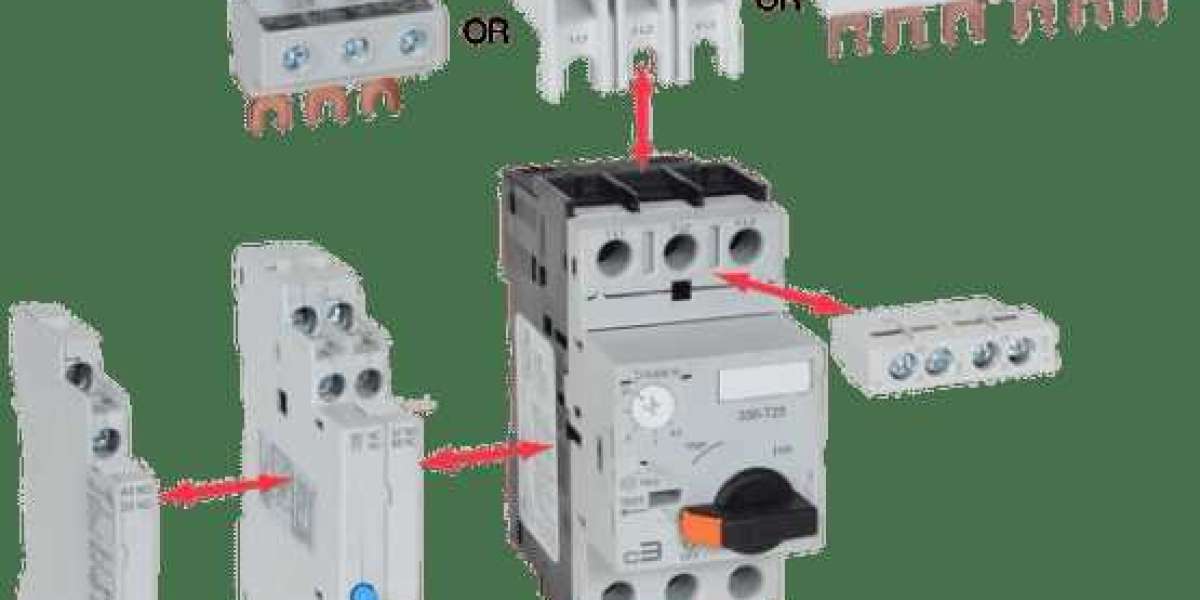Motor Protection Circuit Breakers (MPCBs) play a critical role in safeguarding electric motors from damage and ensuring reliable operation in industrial and commercial settings. This blog explores the functions, benefits, applications, and maintenance tips related to MPCBs, emphasizing their importance in motor protection.
Introduction to Motor Protection Circuit Breakers (MPCB)
Motor Protection Circuit Breakers (MPCBs) are specialized electrical devices designed to protect electric motors from electrical faults such as overloads, short circuits, and phase failures. They combine the functions of a circuit breaker and a motor overload relay into a single compact unit, providing comprehensive protection against various motor-related hazards.
The Importance of Motor Protection in Industrial Settings
In industrial environments, electric motors are crucial for powering machinery, equipment, and processes. Protecting these motors from damage is essential to prevent costly downtime, production delays, and equipment failure. MPCBs ensure that motors operate within safe electrical limits, thereby extending their lifespan and optimizing operational efficiency.
How MPCBs Work: A Detailed Explanation
MPCBs operate based on two primary mechanisms:
- Overload Protection: Monitors motor current and trips the circuit breaker if current levels exceed preset limits, preventing overheating and motor burnout.
- Short Circuit Protection: Detects and interrupts electrical faults such as short circuits or phase failures to prevent damage to the motor and connected equipment.
These protective functions are integrated into the MPCB unit, which automatically disconnects the motor from the power supply in case of an abnormal electrical condition.
Key Features of MPCBs
Key features of MPCBs include:
- Adjustable Overload Settings: Allows customization of current trip thresholds to match specific motor requirements.
- Phase Failure Protection: Detects phase loss and prevents motor operation to avoid damage from unbalanced voltages.
- Compact Design: Occupies less space compared to separate circuit breakers and overload relays, facilitating easier installation and maintenance.
Benefits of Using MPCBs for Motor Protection
The use of MPCBs offers several advantages:
- Enhanced Motor Lifespan: Prevents overheating and mechanical stress, prolonging motor life.
- Improved Safety: Reduces the risk of electrical hazards and potential workplace accidents.
- Reduced Downtime: Minimizes unplanned downtime by promptly responding to electrical faults and protecting motors from damage.
Common Applications of MPCBs
MPCBs are employed in various applications across industries, including:
- Manufacturing: Used in conveyor systems, pumps, and production machinery.
- Commercial Buildings: Installed in HVAC systems, elevators, and escalators.
- Mining and Quarrying: Applied in crushers, drills, and mining equipment.
Their versatility makes MPCBs indispensable for ensuring reliable motor operation in diverse industrial and commercial environments.
Choosing the Right MPCB for Your Needs
When selecting an MPCB, consider factors such as:
- Motor Ratings: Ensure compatibility with the motor's voltage and current ratings.
- Environmental Conditions: Choose models suitable for the operating environment's temperature and humidity.
- Additional Features: Opt for MPCBs with supplementary functions like remote monitoring or communication capabilities for enhanced control and diagnostics.
Maintenance and Troubleshooting Tips for MPCBs
To maintain optimal performance of MPCBs:
- Regular Inspections: Check for signs of overheating, corrosion, or mechanical wear.
- Testing: Periodically test trip functions and adjust settings as necessary to ensure proper operation.
- Cleanliness: Keep MPCB contacts and terminals clean and free from debris to maintain reliable electrical connections.
Prompt troubleshooting of any detected issues can prevent potential motor damage and ensure continuous protection.
Conclusion
Motor Protection Circuit Breakers (MPCBs) are essential components in ensuring the safe and efficient operation of electric motors across various industrial and commercial applications. By providing comprehensive protection against overload, short circuit, and phase failure conditions, MPCBs help minimize downtime, enhance equipment longevity, and improve workplace safety.
Understanding the functions, benefits, applications, and maintenance requirements of MPCBs is crucial for selecting the right protection solution tailored to specific motor control needs. Incorporating MPCBs into motor control systems not only safeguards valuable equipment but also contributes to overall operational efficiency and reliability.








